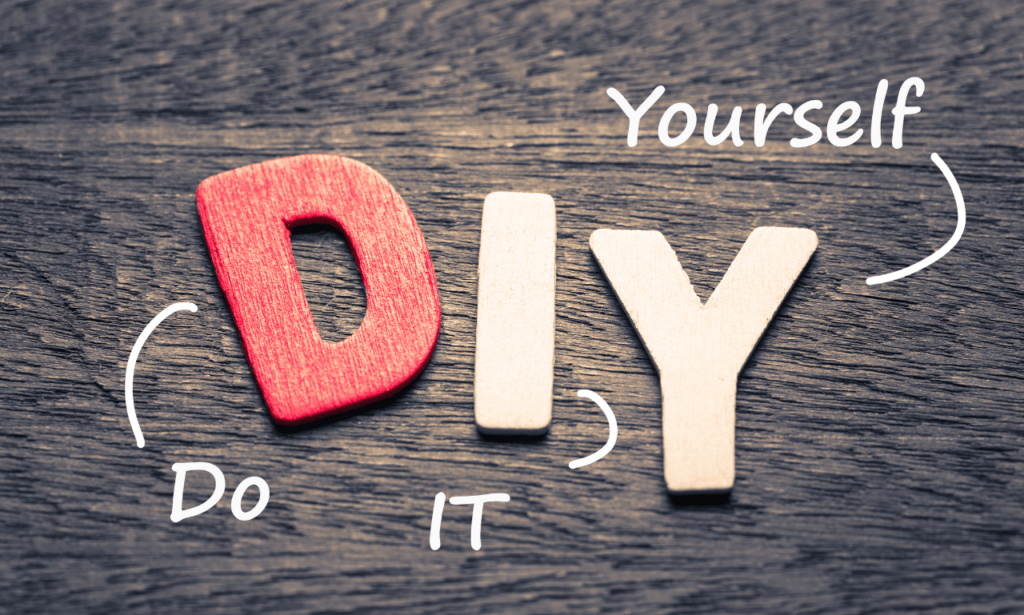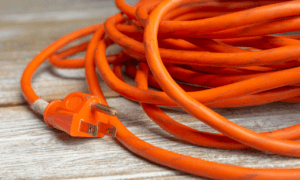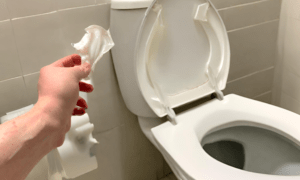Introduction
Understanding Common Drain Problems
- Clogged shower drains are a common household nuisance. They disrupt your daily routine and can lead to more severe plumbing issues if not addressed promptly. When facing a slow-draining shower, many homeowners resort to the tried-and-true method of plunging. However, what happens when plunging makes the situation worse? In this comprehensive guide, we’ll explore the reasons behind this dilemma and offer solutions for tackling it effectively.
How Plunging Can Sometimes Backfire
- You might be wondering why something as seemingly straightforward as plunging a shower drain can lead to unexpected complications. The answer lies in the nature of clogs and the way plumbing systems work. Sometimes, our best intentions can inadvertently exacerbate the problem. In this article, we’ll delve into the signs of a clogged shower drain, the correct way to plunge it, and what to do when plunging goes awry. By the end, you’ll be equipped with the knowledge and strategies needed to navigate this common household predicament.

Signs of a Clogged Shower Drain
Slow Drainage Issues
- One of the first indications that your shower drain is clogged is a noticeable decrease in drainage speed. You’ll notice that water takes longer to disappear, leaving you ankle-deep in bathwater by the end of your shower. Slow drainage is a frustrating issue, but it’s a clear signal that something is amiss in your plumbing system. If left unaddressed, it can lead to more severe problems down the line.
Water Pooling in the Shower
- Another telltale sign of a clogged shower drain is water pooling at your feet while you shower. This not only disrupts your bathing experience but also suggests that your drain isn’t functioning as it should. If you find yourself standing in a mini-pool every time you shower, it’s time to investigate further and take action. Understanding these signs is crucial for identifying a clogged drain early, potentially saving you from a more significant plumbing headache.

The Common Approach: Plunging
Why People Resort to Plunging
- When faced with a clogged shower drain, most people’s initial instinct is to reach for a plunger. It’s a widely known and accessible tool that can effectively clear minor blockages. The suction created by plunging can dislodge hair, soap scum, and other debris, allowing water to flow freely again. However, it’s crucial to use this method correctly to avoid causing more harm than good.
Steps to Plunge a Shower Drain Properly
- Plunging a shower drain may seem straightforward, but there’s a proper technique to ensure its effectiveness. Start by removing any visible debris from the drain cover. Next, partially fill the tub or shower basin with enough water to cover the plunger’s cup. Place the plunger over the drain, ensuring a tight seal, and push and pull vigorously in a vertical motion. This action creates pressure changes that can dislodge the clog. However, it’s essential not to exert excessive force, as this can lead to complications, as we’ll discuss in the next section.

When Plunging Goes Wrong
Factors Leading to a Worsened Situation
- Unfortunately, there are scenarios where plunging can worsen the situation. This happens when the clog is too severe or if there are underlying issues within the plumbing system. One common mistake is using too much force during the plunging process. Excessive pressure can lead to pipes becoming dislodged or damaged, causing leaks and additional expenses.
The Risks of Excessive Force
- Excessive force during plunging isn’t just risky for your plumbing; it can also be physically strenuous and potentially harmful to you. It’s crucial to remember that plunging should be a controlled and measured action. If you find that the clog persists despite your efforts or if you encounter resistance that seems unusual, it’s time to step back and consider other methods. This article will guide you through alternatives and how to assess the severity of the issue before proceeding further.
The following sections will provide more insights into these issues and offer solutions to address them effectively.

Assessing the Severity
Identifying the Extent of the Problem
- Before diving into any DIY solutions or calling in professionals, it’s essential to assess the severity of your shower drain issue. This evaluation helps you determine whether your clog is a minor inconvenience or a more significant problem that requires expert attention. Factors to consider include the duration of the issue, the extent of the blockage, and whether previous DIY attempts have been successful.
Signs That It Might Be Time to Seek Professional Help
- While many clogged shower drains can be resolved with DIY methods, some situations warrant professional assistance. If you notice recurring clogs, foul odors, or slow drainage that persists after attempting home remedies, it’s a sign that the problem may be deeper within your plumbing system. Professional plumbers have the expertise and equipment to diagnose and address complex issues effectively.

DIY Solutions to Salvage the Situation
Safe Methods to Correct a Mistaken Plunge
- If you’ve determined that your plunging efforts have made the situation worse, don’t panic. There are several safe and straightforward DIY methods to salvage the situation. These methods include using a drain snake or auger, employing natural drain cleaners, and utilizing a wet-dry vacuum to remove blockages. We’ll guide you through these steps to help you regain control of your clogged shower drain.
Tools and Products for Home Remedies
- To effectively tackle a shower drain issue, you’ll need the right tools and products. We’ll provide a list of essential items for your DIY toolkit, including drain snakes, natural drain cleaners, wet-dry vacuums, and protective gear. Having these on hand will enable you to address clogs promptly and prevent future blockages with regular maintenance.
Preventative Measures for Future Clogs
Maintaining a Clean Shower Drain
- Preventing future clogs is just as important as addressing the current issue. We’ll explore proactive measures you can take to keep your shower drain clean and functioning smoothly. This includes regular cleaning, installing drain covers, and using hair catchers to trap debris before it enters the drain. By adopting these practices, you can minimize the likelihood of future clogs and the need for emergency interventions.
Habits to Avoid Clogs in the First Place
- Beyond maintenance, certain habits can significantly reduce the risk of shower drain clogs. We’ll discuss these habits, such as avoiding excessive use of soap and hair products, minimizing the amount of debris entering the drain, and being cautious with foreign objects that could accidentally end up in the plumbing. These simple changes in your daily routine can go a long way toward preventing future drain issues.

Professional Drain Cleaning Services
When to Call in the Experts
- While DIY methods can resolve many shower drain problems, there are instances where professional intervention is the best course of action. We’ll outline specific scenarios that indicate it’s time to call a plumbing expert. These include persistent clogs, strange odors, and unusual sounds emanating from the drain. Recognizing these signs will help you make an informed decision about when to seek professional help.
The Benefits of Professional Drain Cleaning
- Professional plumbers have the knowledge, experience, and specialized equipment to handle even the most stubborn clogs. We’ll delve into the advantages of hiring a professional, such as their ability to perform thorough inspections, offer long-term solutions, and provide preventative maintenance. By understanding the benefits, you’ll be better prepared to make the right choice for your plumbing needs.
Finding a Trustworthy Plumbing Professional
- When it comes to resolving complex plumbing issues, choosing the right plumber is paramount. We’ll provide tips on how to find a trustworthy plumbing professional. This includes seeking referrals from friends and family, reading online reviews, and verifying licenses and certifications. Knowing how to identify a reputable plumber will ensure that you receive quality service and a lasting solution to your shower drain woes.
Questions to Ask Before Hiring
- Before hiring a plumber, it’s essential to ask the right questions to ensure they’re the right fit for the job. We’ll provide a list of questions to consider, such as inquiries about their experience, pricing structure, warranties, and estimated timelines. These questions will help you make an informed decision and ensure a smooth collaboration with the plumber you choose.
Conclusion
Learning from the Experience
- Dealing with a clogged shower drain, especially one exacerbated by well-intentioned plunging, can be a frustrating experience. However, it can also be a valuable learning opportunity. We’ll recap the key takeaways from this guide, emphasizing the importance of proper assessment, safe DIY methods, and knowing when to seek professional help.
Keeping Your Shower Drain Trouble-Free
- In conclusion, we’ll leave readers with a final word of advice on maintaining a trouble-free shower drain. By staying proactive and informed about drain care, you can avoid the headache of clogs and ensure the smooth operation of your plumbing system. Remember that a little prevention goes a long way toward keeping your shower drain in pristine condition.
This comprehensive guide equips readers with the knowledge and strategies to navigate clogged shower drain issues, from DIY solutions to choosing professional help and maintaining a clog-free future.
If you’re looking for DIY solutions to secure your furniture on hardwood floors, be sure to read our article ‘SECURE YOUR FURNITURE ON HARDWOOD FLOORS: EASY DIY‘ for step-by-step instructions and helpful tips.















